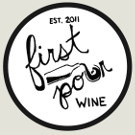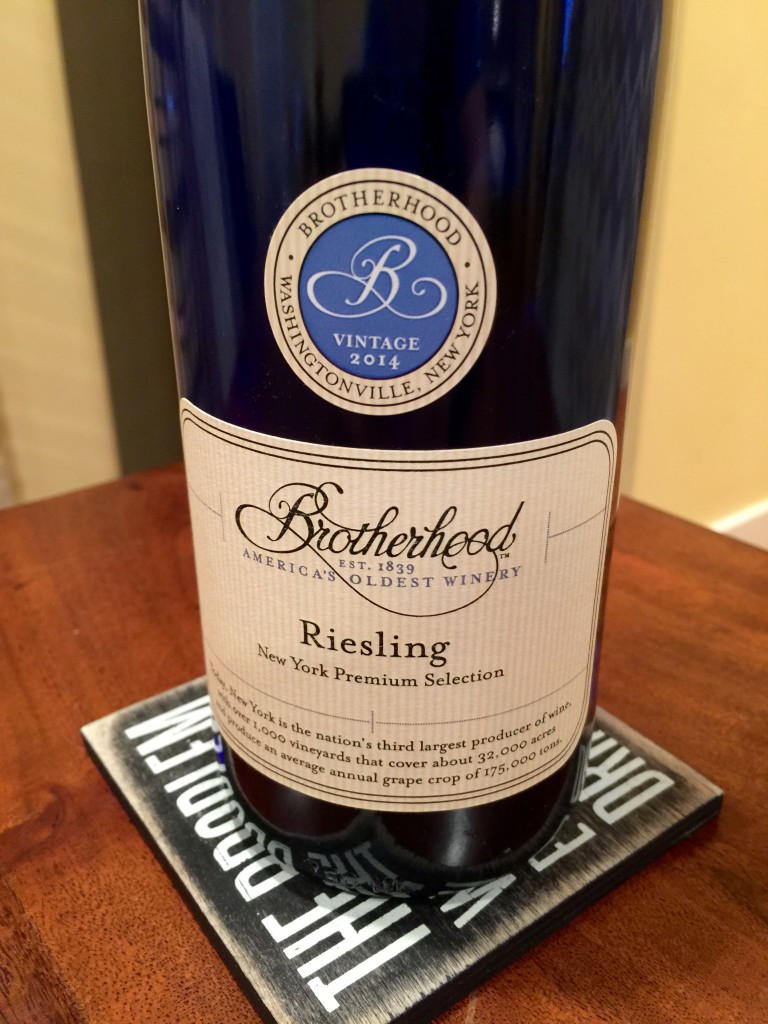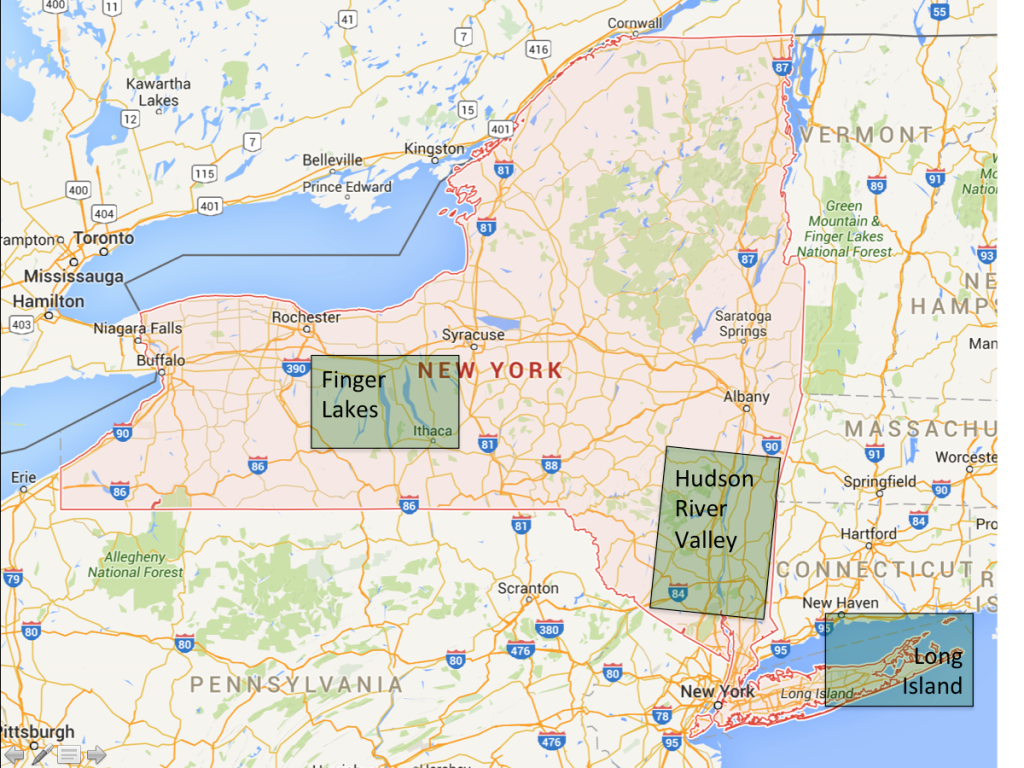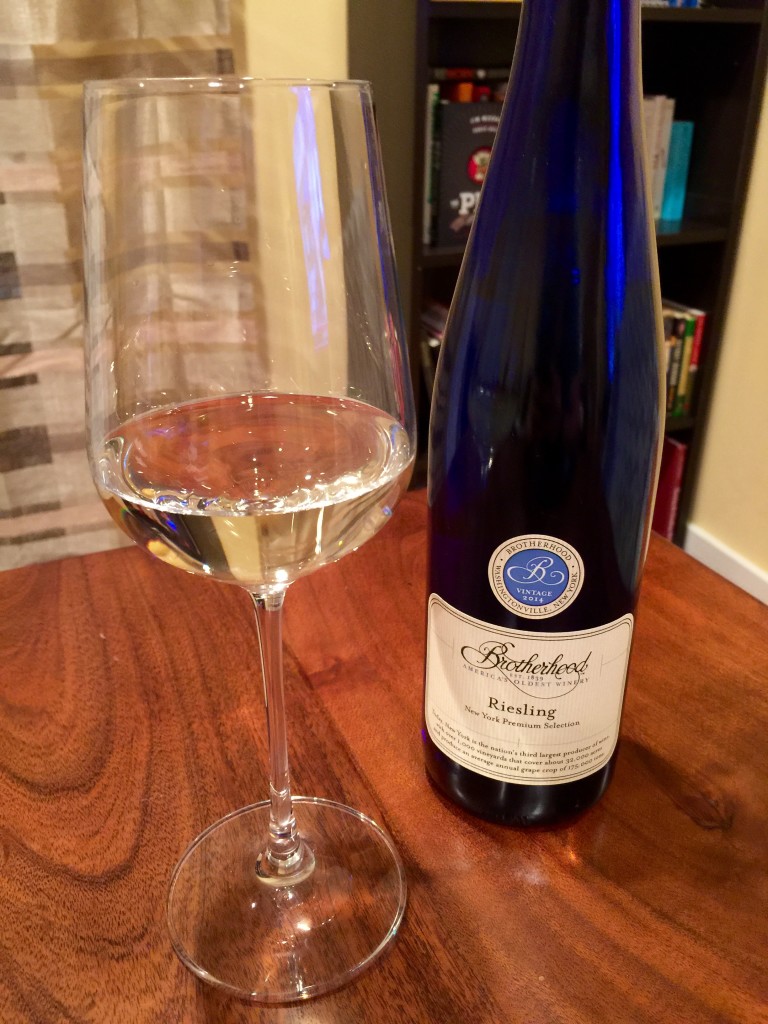Welcome to the first in a series of posts about New York State’s wine and the regions associated. Leading off is the oldest winery in America, Brotherhood, who is based in the Hudson River Valley. Before we talk about Brotherhood Riesling though, let’s take a quick gander at New York State, and the wine regions associated.
New York State’s Three Major Wine Regions:
- The Hudson River Valley
- The Finger Lakes
- Long Island
While there are a significant number of grapes produced along lake Erie, these are primarily Concord grapes, used for jams and jellies, not wine. Concord is of course not a European (Vitis Viniferia) grape, but rather an American (Vitis Labrusca) grape, which are known for a more foxy character. Yet, without these wonderful vines, the landscape might look very different, as many vineyards were devastated by phylloxera, a vineyard pest to which Viniferia root stock was not immune, but American root stocks were. To this day, New York maintains a high level of vineyard diversity, with many native American, hybrid, and European vines grown.
Top New York Grapes:
- White
- Riesling
- Chardonnay
- Seyval Blanc
- Vidal
- Red
- Cabernet Franc
- Merlot
As one might expect, New York is cooler, and as such ends up being better suited to white wines with shimmering acidity or lean, sleek reds, rather than big, jammy fruit bombs like those that come from California. Other wines of note from New York include: Catawba, Gewurztraminer, and Rkatsiteli
Brotherhood Riesling 2014 and Hudson River Valley
To the south of New York’s capital rests the Hudson River Valley, an area that started growing grapes as far back as the 1600’s. As of 1982, the region became a AVA, and with the help of the Hudson’s mitigating effects on temperature, Seyval Blanc and many traditional European varietals have done particularly well here in upholding their viniculture status. The area also has some of the steeper cliffs along river, which make for interesting growing areas to help the vines struggle as well. In addition to Brotherhood, the are is also home to Royal Kedem Wine Corporation, one of the biggest Kosher wine making groups in the world.
Does Brotherhood’s Riesling 2014 do the area justice?
Sight: Very light, pale straw in color with a watery edge
Smell: Pear and apple are predominant with hints of floral elements and touches of rubber / fox. Honeyed notes join in, and have a bit wet stone and vanilla.
Sip: The sip is smooth and round thanks to hints of sweetness. Honey and vanilla become entwined with the touches of sweetness, layering over ripe pear and hints of flowers. The wet stone from the nose minimizes with the subtle sweetness.
Savor: The ending drives toward stone and honeysuckle, leaning into slightly pithy lemon and floral flavors. The finish has a rather moderate length.
The flavors of Brotherhood Riesling are firm, despite the softness of the palate. The flavors are on the sweeter side, and more toward pome fruit, honey, and vanilla than the bright citrusy notes that a totally dry riesling might pick up. That being said, the wine is fun, and would lend itself well to slightly spicy food like Thai or Indian. Brotherhood Riesling is definitely well made, and shows why the winery is still here after almost 200 years.
Verdict: Pome Fruit, Soft, Honey, Vanilla, Round
Rating: 71
Price: $8.95
Washingtonville, New York (Note, Brotherhood does not mention that their grapes are from the AVA)



